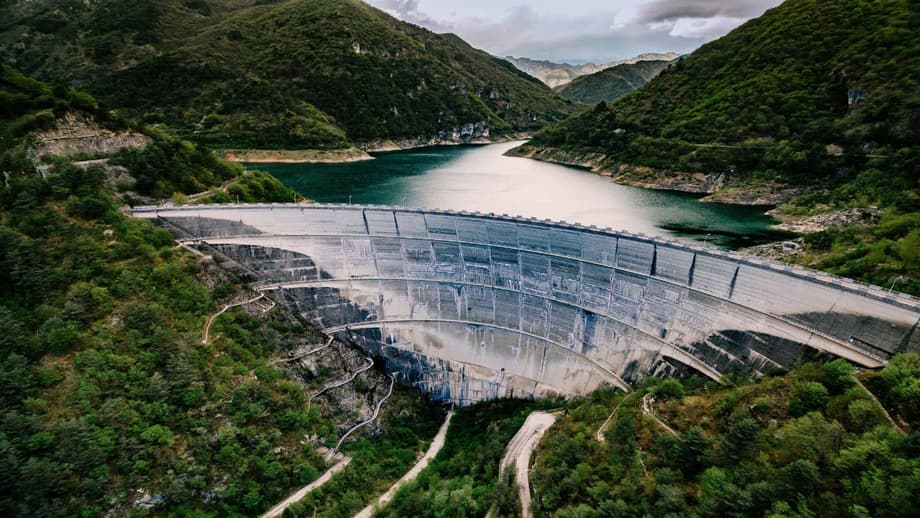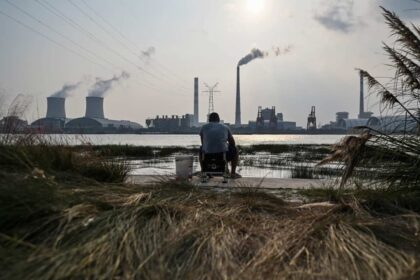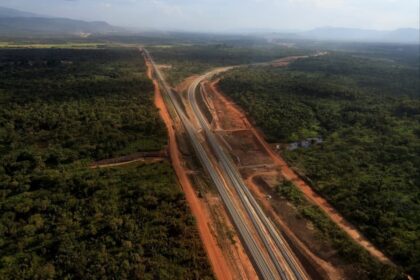A new kind of hydropower for a changing grid
China has commissioned the State Grid Xinyuan Jiangsu Jurong pumped storage power station, a 182.3 meter dam that now stands as the tallest pumped storage dam in the world. The facility stores 17.07 million cubic meters of water, roughly 17 billion liters, and delivers 1.35 million kilowatts of installed capacity. Once fully in commercial operation, it is expected to produce about 1.35 billion kilowatt hours of electricity each year during generation cycles. The project arrives as eastern China power demand sets new records while the country adds large volumes of wind and solar power.
- A new kind of hydropower for a changing grid
- What pumped storage does and why it matters
- Inside the 182 meter project
- How it fits into China’s wider hydropower build out
- Engineering achievements and environmental trade offs
- Regional ripple effects and cross border projects
- What this means for consumers and industry
- Key Points
Unlike a conventional river dam that relies on the steady flow of a major waterway, a pumped storage plant works like a giant water battery. It moves water between an upper and a lower reservoir, pumping uphill when the grid has surplus electricity and releasing water through turbines during peaks. That two way operation turns intermittent energy from the sun and wind into dependable power on call, which is the service dense urban and industrial centers like Jiangsu require.
The new station is built to sit close to load centers, not far from the Yangtze River delta, and it is designed for fast response. Operators can ramp output in minutes to handle sudden changes in supply or demand. Engineers also introduced new anti seepage membranes in the dam body and installed extremely large spherical valves to improve reliability and maintenance. The project shows how China is building more assets that stabilize the grid alongside new generation.
What pumped storage does and why it matters
Pumped storage is the most widely deployed form of grid scale energy storage. When there is excess electricity, usually at night or during windy and sunny hours, the plant uses that power to drive pumps that lift water to the upper reservoir. When the system needs electricity, the water flows back down through turbines to generate power. The process has a round trip efficiency that typically ranges between 70 percent and 85 percent. That means some energy is lost in the cycle, but the value lies in shifting energy from times of surplus to times of scarcity.
China is integrating renewable capacity at a rapid pace. That growth makes balancing services essential. The Jurong facility adds multiple capabilities in one site. It provides peak shaving to clip the evening demand surge, frequency regulation to keep the grid at a stable 50 hertz, phase control to support voltage, and rapid reserve for contingencies. The station can deliver around 2.7 million kilowatts of bidirectional regulation capacity, according to project operators.
The location is no accident. Jiangsu has recorded maximum electricity loads above 100 million kilowatts for nine straight years, and this past summer the grid reached a high of 156 million kilowatts. Placing a large storage plant in the heart of that system reduces the need to fire up peaking coal units and improves the absorption of renewable energy that is otherwise curtailed when the grid cannot take it all.
Inside the 182 meter project
The Jurong station rises 182.3 meters, roughly the height of a 60 story building. The reservoirs can hold 17.07 million cubic meters of water. The plant has an installed capacity of 1.35 million kilowatts, and full operation is expected to deliver about 1.35 billion kilowatt hours in a typical year of generation. The site is often described as a water energy bank. It stores energy when power is plentiful and inexpensive, then returns it when demand and prices are higher.
Engineers had to meet ambitious targets for a pumped storage dam built in a high load plain rather than deep in remote canyons. The dam body uses new anti seepage geomembranes to limit leakage and protect groundwater. The plant also incorporates some of the largest ball valves installed in China, which improves safety and eases maintenance. Those choices help the station cycle water more efficiently and reduce downtime.
The plant hardware is only part of the story. The dispatch center must manage quick starts, stops, and frequent mode switching between pumping and generating. That requires robust digital control, precise water level monitoring, and coordination with the regional grid operator. Because the upper reservoir experiences daily up and down movements, crews reinforced shorelines and designed operational rules to limit erosion and protect nearby communities.
How it fits into China’s wider hydropower build out
China hydropower portfolio spans giants on the country southwest rivers and a growing network of pumped storage stations near demand hubs. The Baihetan Hydropower Station on the Jinsha River has 16 gigawatts of capacity behind a 289 meter arch dam, making it the second largest hydropower facility in the world after Three Gorges. Projects like Baihetan and Wudongde deliver large volumes of low carbon electricity and flood control along long river systems.
Pumped storage plays a different but complementary role. It does not create new primary energy from river flows. It shifts energy across hours and days and helps long distance ultra high voltage lines operate more smoothly. When southwestern hydropower or northern wind farms send power east, pumped storage plants near the coast absorb surges and release energy during peaks. That reduces curtailment of renewables and cuts the need for expensive peaker plants in cities.
China has expanded pumped storage capacity quickly during the current planning period. Since the start of the Fourteenth Five Year Plan, more than 44.53 million kilowatts of pumped storage have been added to the grid. National climate goals call for peaking carbon emissions before 2030 and reaching carbon neutrality by 2060. Storage is a bridge that allows higher shares of renewable generation without sacrificing reliability, and pumped storage remains the backbone of that effort.
Engineering achievements and environmental trade offs
Technical advances made this dam possible at such height for a pumped storage station. The anti seepage liner protects the dam structure and limits water losses. Oversized spherical valves handle the high pressures that come with a tall head, increasing safety. Builders had to stage complex underground works, intake tunnels, and surge chambers while managing impacts on nearby towns.
Pumped storage can reduce some of the environmental pressures seen with very large river blocking dams. These projects are often off river, so they do not cut fish migration routes on main stems. Reservoirs are smaller and sit higher in the terrain, which can limit relocations. Daily water level swings, however, can stress shoreline vegetation and wildlife, and construction still disrupts habitats. Careful design and strict operating rules are needed to limit erosion, control sediment, and avoid groundwater contamination.
The approach to hydropower in China has shifted to quality control after a period of building thousands of small plants. Authorities have closed or removed many small, often illegal dams on tributaries that harmed sensitive species and conflicted with new ecological red lines. Large projects now face tighter environmental assessments, and projects like Jurong incorporate technology to contain seepage and protect adjacent water resources.
Regional ripple effects and cross border projects
Hydropower is also a diplomatic issue in Asia. Plans in China for a giant project on the Yarlung Tsangpo, the upper course of the Brahmaputra, have prompted close monitoring and calls for safeguards from downstream India. Officials in New Delhi have emphasized the need for transparency, data sharing, and consultation on projects that could alter flows, silt patterns, or ecosystems across borders. India is weighing its own large hydropower developments in Arunachal Pradesh to improve water security and power supply in the northeast.
Both sides are discussing the early resumption of hydrological data exchanges and protocols for cooperation on trans border rivers. Experts in the region point to the importance of site specific risk assessments for any Himalayan project, given seismic activity and fragile ecology. While pumped storage plants like Jurong tend to operate off river and carry fewer cross border risks, mega dams on main stems require stronger communication among neighbors.
Beyond South Asia, dam building is part of energy security strategies across Eurasia. Tajikistan Rogun project, designed with a 335 meter high dam, has drawn interest from international partners seeking to support Central Asian independence from imported fuels. This activity shows a broad trend. Countries are pairing big river hydropower where geography allows with storage assets such as pumped storage to keep grids steady as more renewables enter the mix.
What this means for consumers and industry
For factories and households in Jiangsu, more storage capacity translates to fewer peak time shortages and less stress on the grid during heat waves. Pumped storage helps avoid sudden curtailments for wind and solar farms, so clean energy already paid for does not go to waste. It also cuts reliance on coal fired peakers that are costly to run and polluting at the margin.
The station is expected to produce about 1.35 billion kilowatt hours annually during generation cycles, which is roughly equal to the yearly electricity use of around one million typical Chinese households. That comparison shows the scale of the equipment, but pumped storage is better understood as a flexibility asset. It consumes energy during pumping and returns most of it during generation. The value lies in keeping the lights on when demand spikes and in maintaining stable voltage and frequency for sensitive industrial equipment.
As China power market evolves, plants like Jurong will earn revenue not just from selling kilowatt hours, but also from services such as fast reserves and frequency response. Those services are increasingly important as electrification expands across transport, heating, and manufacturing. With more storage on the system, the cost of integrating additional solar and wind projects falls, which benefits consumers over time.
Key Points
- China commissioned a 182.3 meter pumped storage dam in Jiangsu, the tallest of its kind worldwide.
- The plant stores 17.07 million cubic meters of water and has 1.35 million kilowatts of installed capacity.
- Expected annual output is about 1.35 billion kilowatt hours during generation cycles.
- The station provides peak shaving, frequency regulation, phase control, and rapid reserves for the East China grid.
- Jiangsu peak load hit 156 million kilowatts this summer, which raises the value of local storage capacity.
- Since the start of the current Five Year Plan, China has added more than 44.53 million kilowatts of pumped storage capacity.
- Pumped storage helps absorb variable wind and solar power and reduces the need to run peaking coal units.
- Engineers used anti seepage liners and oversized ball valves to meet safety and reliability targets at this height.
- China is removing many small, ecologically harmful dams while scrutinizing large projects more closely.
- Cross border hydropower plans on the Brahmaputra are under discussion between China and India, with calls for transparency and data sharing.












